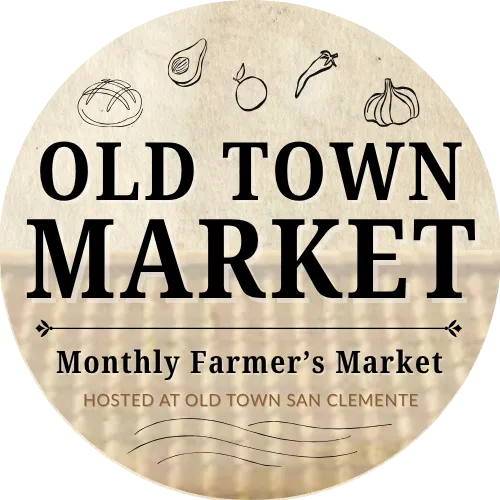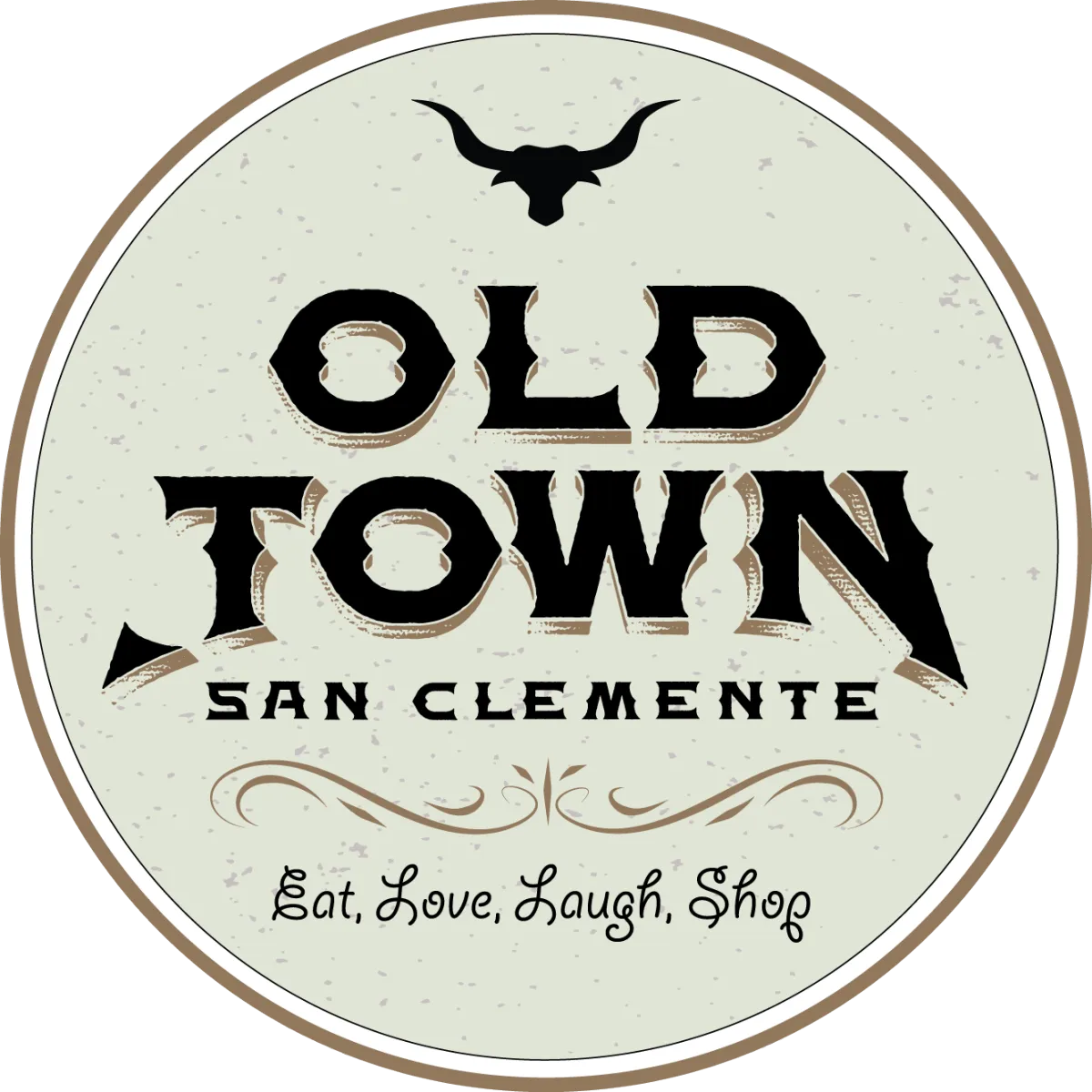THISTLE & SCONE - LOCAL HONEY
Old Town Market cherished vendor for Local Honey, Bee Pollin & Teas
THISTLE & SCONE - LOCAL HONEY
Old Town Market cherished vendor for Local Honey, Bee Pollen & Teas
📍 THISTLE & SCONE
San Clemente's Local Honey
Producer of: Local Honey, Flavored Honeys, Bee Pollen, and Teas & Honey Pairing.
All About Thistle & Scone Honey's and Tea's
Thisle & Scone partners with beekeepers all throughout southern Orange County. So, our honey is very local, raw, and unfiltered. We have five different perennials right now. Sometimes we even have more than 12. So we're supporting all the micro agriculture in the area, orange blossom, even avocado blossom and our famous wildflower.
My favorite Honey is the perennial that it's created from pollinating the citrus from the orange blossom. But avocado is notoriously molasses flavored. It's popular for like barbecues and glazes especially because of that darker robust body. Bees are amazing gifts!
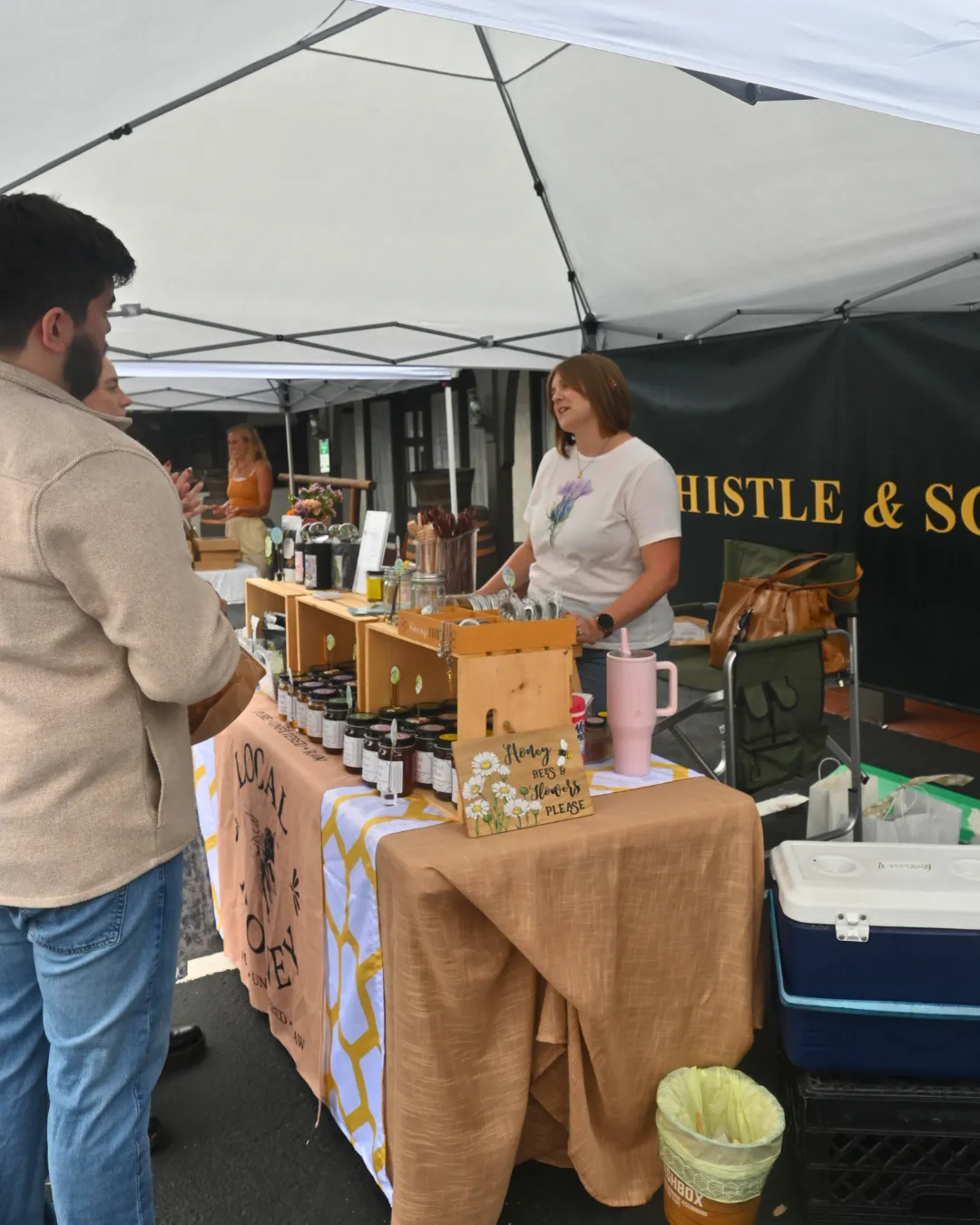
📍 THISTLE & SCONE
San Clemente's Local Honey
Producer of: Local Honey,
Flavored Honeys
Bee Pollin
Teas & Honey Pairing
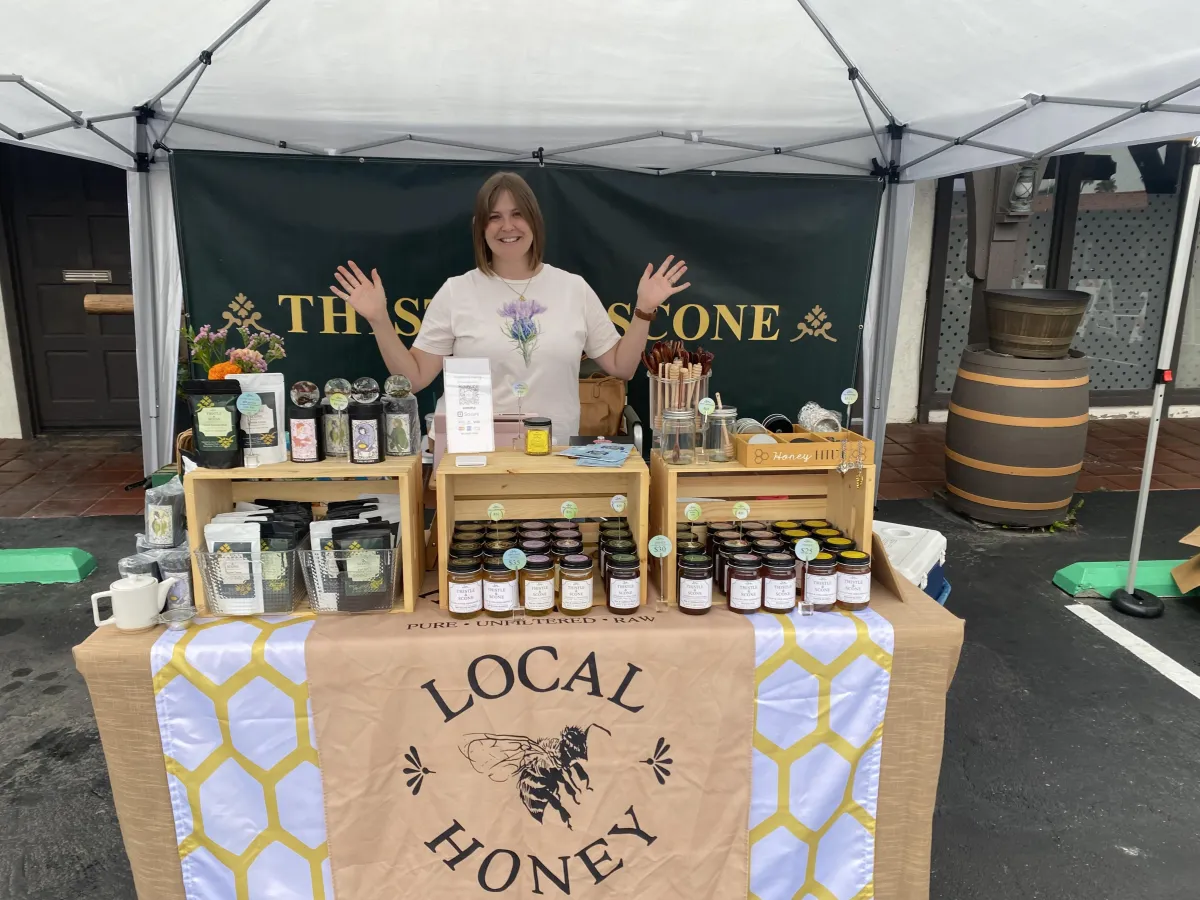
Tea and Honey Pairing. Tea tins to resemble what I feel like when I'm drinking my tea. Nothing goes better with tea than honey. My favorite honey is the organic orange blossom right now. It's a really strong flavor of floral and citrus. And then my favorite tea is the jasmine green tea. They pair together very well, too. So, if I like teas, then you can put amazing honey in a tea, so you get a hot paired cup of tea with explosions of taste buds from the honey.
It started as a hobby, beekeeping, and then you just kind of get the ball rolling. People start asking questions, you start offering beekeeping classes, and then your mentors ask for your help selling honey because it's a byproduct of beekeeping, and we needed sell more honey to get the bees to pollinate more. Now its turned into an amazing adventure. Please come visit us in Old Town San Clemente and learn about out bees and amazing teas and honeys.
All About Thistle & Scone Honey's and Tea's
Thisle & Scone partners with beekeepers all throughout southern Orange County. So, our honey is very local, raw, and unfiltered. We have five different perennials right now. Sometimes we even have more than 12. So we're supporting all the micro agriculture in the area, orange blossom, even avocado blossom and our famous wildflower.
My favorite Honey is the perennial that it's pollenized from like citrus from the orange blossom. But avocado is notoriously molasses flavored. It's popular for like barbecues and glazes especially because of that darker robust body. Bees are amazing gifts!
Tea and Honey Pairing. Tea tins to resemble what I feel like when I'm drinking my tea. Nothing goes better with tea than honey. My favorite honey is the organic orange blossom right now. It's a really strong flavor of floral and citrus. And then my favorite tea is the jasmine green tea. They pair together very well, too. So, if I like teas, then you can put amazing honey in a tea, so you get a hot paired cup of tea with exposions of taste buds from the honey.
It started as a hobby, beekeeping, and then you just kind of get the ball rolling. People start asking questions, you start offering beekeeping classes, and then your mentors ask for your help selling honey because it's a byproduct of beekeeping, and we needed sell more honey to get the bees to pollinize more. Now its turned into an amazing adventure. Please come visit us in Old Town San Clemente and learn about out bees and amazing teas and honeys.
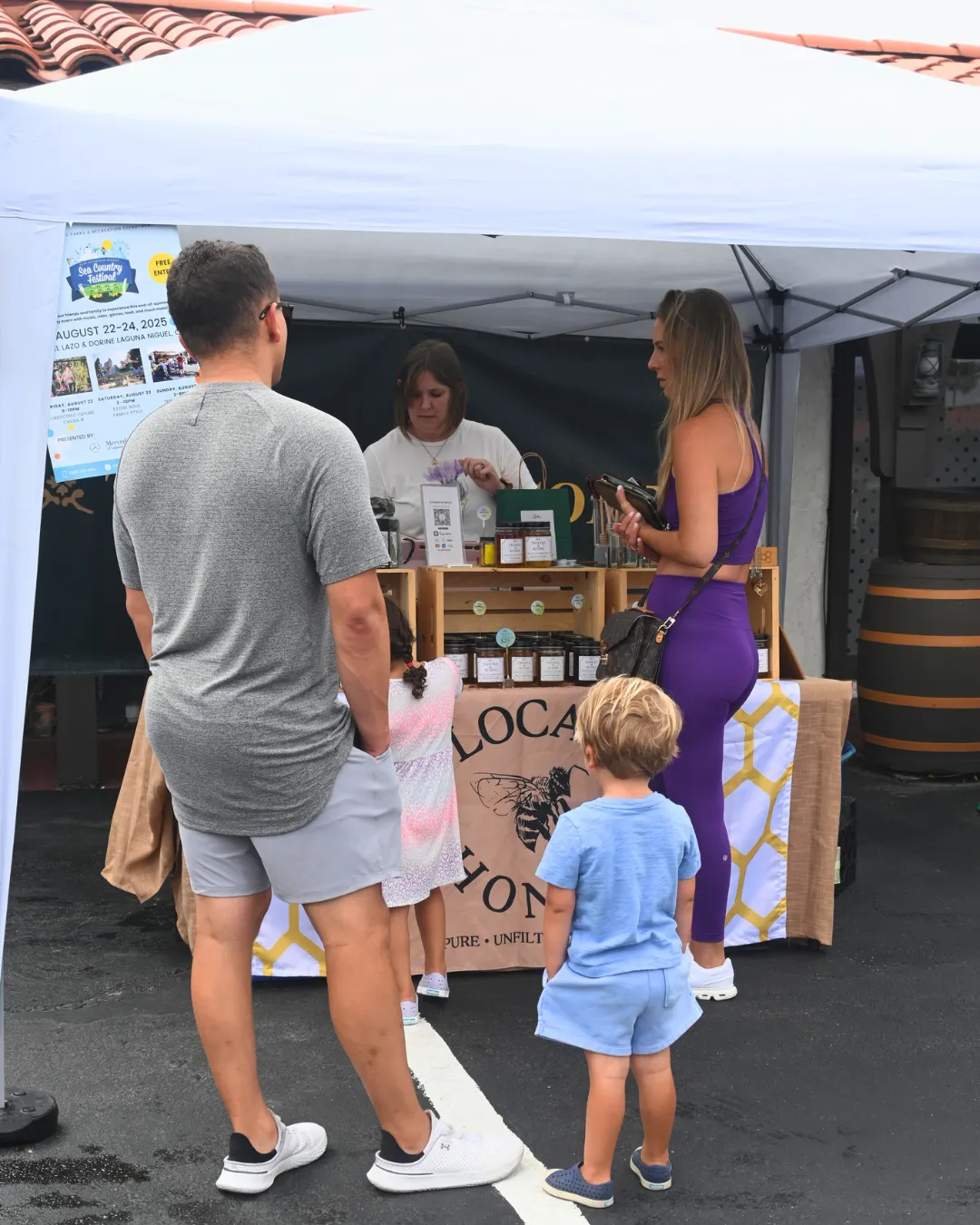
Market Hours
🗓️ Every Second Saturday of the Month
🕖 10:00 AM – 2:00 PM
How to Buy and Contact Us when we are not at the Old Town Market
If you’d like to purchase our fresh, small-batch honey, getting in touch is simple! You can call us directly at (949) 782-2785, send us an email at [email protected]
VISIT US AT THE: Old Town Market
🗓️ Every Second Saturday of the Month
🕖 10:00 AM – 2:00 PM
LOCATION: Old Town San Clemente, 111 W. Avenida Palizada, San Clemente, CA 92672
LEARN ALL ABOUT HONEY!
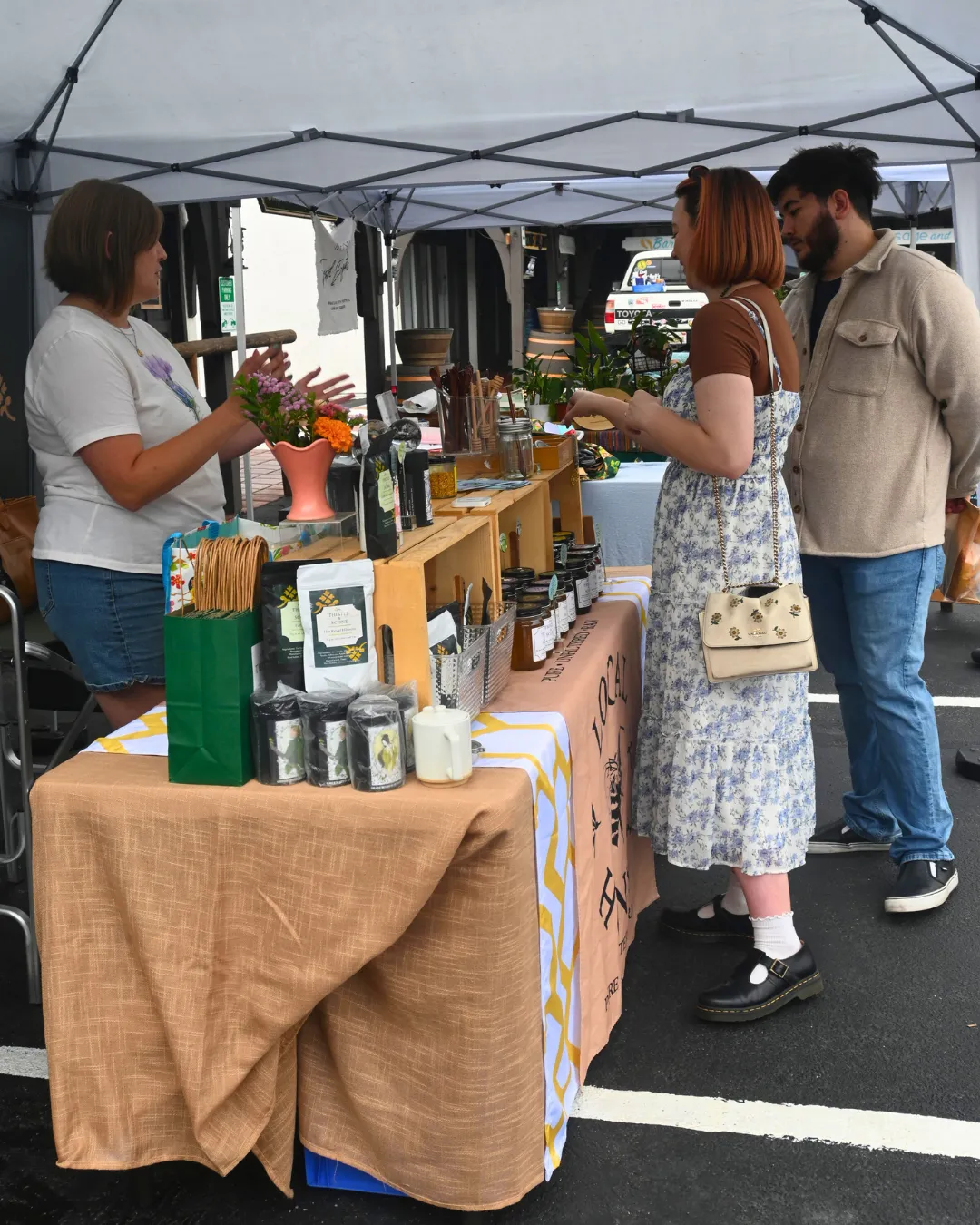
Honey is a sweet and viscous substance made by several species of bees, the best-known of which are honey bees. Honey is made and stored to nourish bee colonies. Bees produce honey by gathering and then refining the sugary secretions of plants (primarily floral nectar) or the secretions of other insects, like the honeydew of aphids. This refinement takes place both within individual bees, through regurgitation and enzymatic activity, and during storage in the hive, through water evaporation that concentrates the honey's sugars until it is thick and viscous.
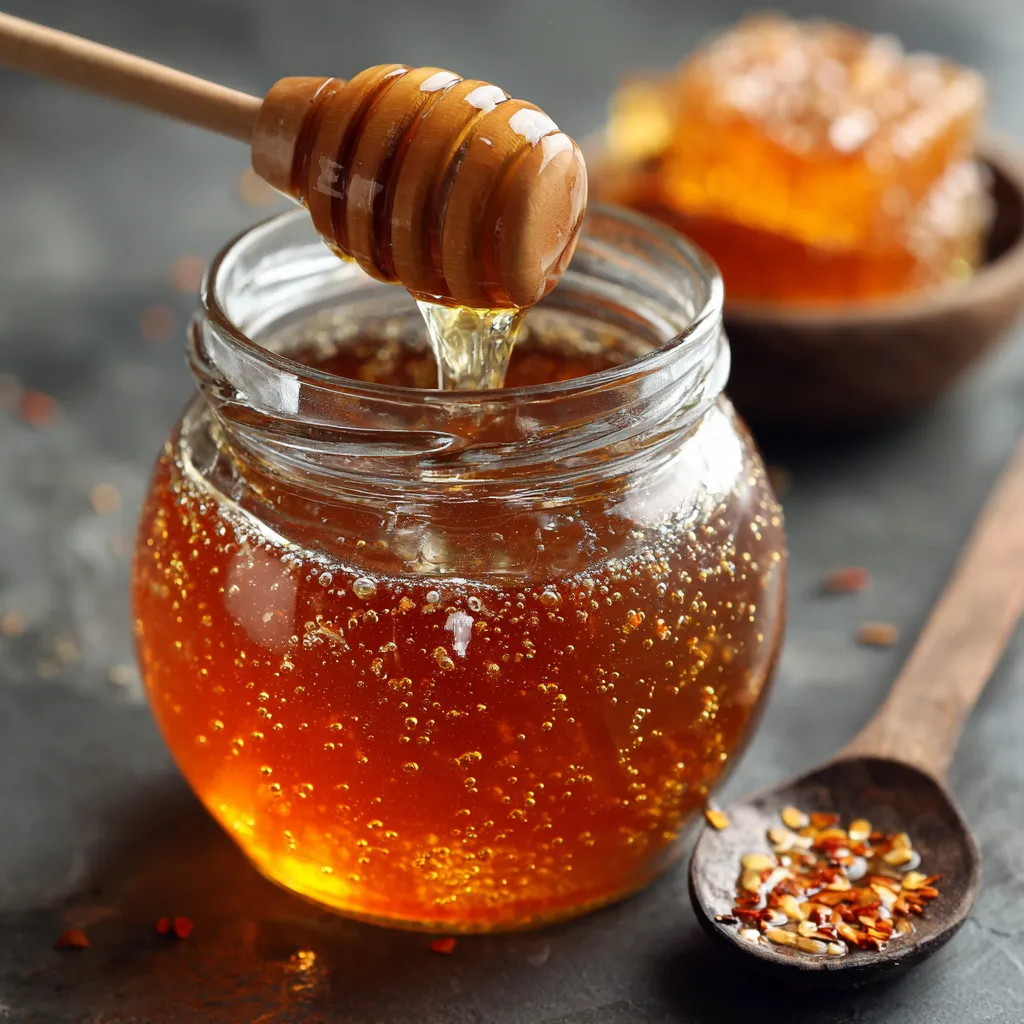
Honey bees stockpile honey in the hive. Within the hive is a structure made from wax called honeycomb. The honeycomb is made up of hundreds or thousands of hexagonal cells, into which the bees regurgitate honey for storage. Other honey-producing species of bee store the substance in different structures, such as the pots made of wax and resin used by the stingless bee.
Honey for human consumption is collected from wild bee colonies, or from the hives of domesticated bees. The honey produced by honey bees is the most familiar to humans, thanks to its worldwide commercial production and availability. The husbandry of bees is known as beekeeping or apiculture, with the cultivation of stingless bees usually referred to as meliponiculture.
Honey is sweet because of its high concentrations of the monosaccharides fructose and glucose. It has about the same relative sweetness as sucrose (table sugar). One standard tablespoon (14 mL) of honey provides around 180 kilojoules (43 kilocalories) of food energy. It has attractive chemical properties for baking and a distinctive flavor when used as a sweetener. Most microorganisms cannot grow in honey and sealed honey therefore does not spoil. Samples of honey discovered in archaeological contexts have proven edible even after millennia
Honey use and production has a long and varied history, with its beginnings in prehistoric times. Several cave paintings in Cuevas de la Araña in Spain depict humans foraging for honey at least 8,000 years ago. While Apis mellifera is an Old World insect, large-scale meliponiculture of New World stingless bees has been practiced by Mayans since pre-Columbian times
Honey is produced by bees who have collected nectar or honeydew. Bees value honey for its sugars, which they consume to support general metabolic activity, especially that of their flight muscles during foraging, and as a food for their larvae. To this end bees stockpile honey to provide for themselves during ordinary foraging as well as during lean periods, as in overwintering. During foraging bees use part of the nectar they collect to power their flight muscles. The majority of nectar collected is not used to directly nourish the insects but is instead destined for regurgitation, enzymatic digestion, and finally long-term storage as honey. During cold weather or when other food sources are scarce, adult and larval bees consume stored honey, which is many times more energy-dense as the nectar from which it is made.
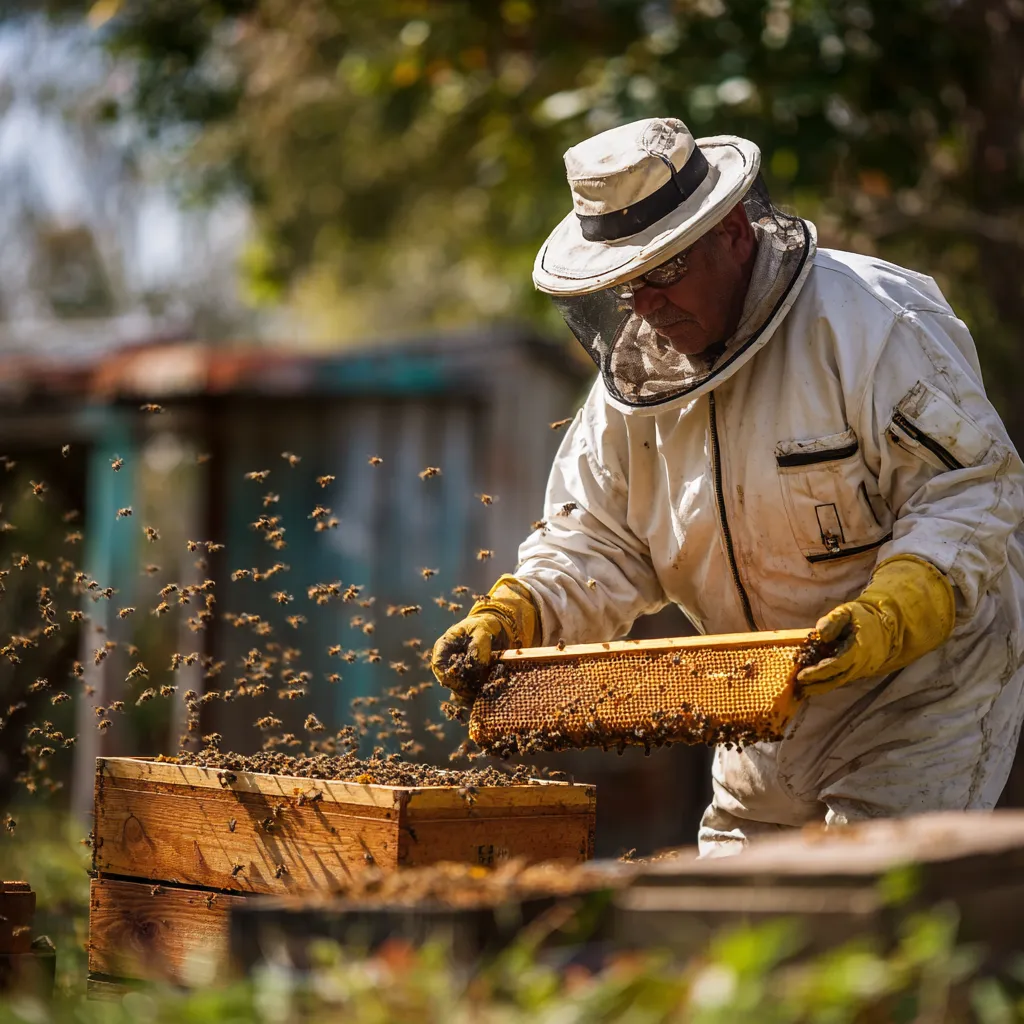
Tea The selection includes black, green, and herbal varieties, chosen for their quality, freshness, and distinct flavor profiles. Loose-leaf tea is promoted as a superior alternative to bagged teas, offering fuller aromas and a more refined brewing experience. The brand positions tea drinking as both a daily ritual and a form of wellness.
Orange honey is a variety of monofloral honey produced primarily from the nectar of orange blossoms. It is commonly harvested in regions with abundant citrus groves, such as California, Florida, Spain, and parts of the Mediterranean. The honey is known for its light golden color, delicate citrus aroma, and mildly sweet flavor with subtle floral and fruity notes.
Orange honey is typically lighter in color compared to wildflower or darker honeys and carries a distinctive aroma reminiscent of orange blossoms. Its taste is often described as smooth, refreshing, and less intense than darker honeys like buckwheat or manuka. Because of its mild profile, orange honey is widely used in teas, baking, salad dressings, and as a natural sweetener for everyday use.
Bees produce orange honey during the citrus bloom season, usually in spring, when orange trees are in flower. Beekeepers often place hives near orchards to allow bees to forage predominantly on orange blossoms. While the honey may still contain small amounts of nectar from other flowers, it is classified as “orange blossom honey” if the majority of nectar is sourced from citrus trees.
Nutritional and Culinary Use
Like other raw, unfiltered honeys, orange honey retains natural enzymes, antioxidants, vitamins, and pollens. It pairs especially well with herbal and black teas, cheese boards, and citrus
Monofloral honey is a type of honey which has a distinctive flavor or other attribute due to its being predominantly from the nectar of a single plant species.[1] It is stored and labeled separately so as to command a premium price. While there may never be an absolute monofloral type, some honeys are relatively pure due to the prodigious nectar production of a particular species, such as citrus (orange blossom honey), or there may be little else in bloom at the time.
Beekeepers learn the predominant nectar sources of their region, and often plan harvests to keep especially fine ones separate.[2] For example, in the southern Appalachians, sourwood honey, from a small tree that blooms late in the season, is highly regarded. Beekeepers try to remove the previously produced dark and strong flavored tulip poplar honey, just before the sourwood bloom, so it does not mix with the lighter sourwood. During sourwood bloom, there is little else for the bees to forage.
Wildflower honey is a type of polyfloral honey made by bees that forage nectar from a variety of wildflowers and flowering plants. Because the nectar sources vary by region and season, wildflower honey can differ significantly in flavor, aroma, and color, making it one of the most diverse categories of honey.
The flavor of wildflower honey ranges from light and floral to dark and robust, depending on the dominant blooms available to the bees during collection. Its color may vary from pale amber to deep golden brown. This variability makes wildflower honey distinct from monofloral honeys, such as orange blossom or clover, which come primarily from one type of flower.
Wildflower honey is produced in many parts of the world and reflects the unique biodiversity of each region. Beekeepers often harvest it during the peak blooming season when a wide variety of plants are in flower. Because of its complex mixture of nectar sources, wildflower honey is sometimes referred to as "multifloral honey."
Like other raw and unfiltered honeys, wildflower honey contains natural enzymes, antioxidants, minerals, and pollens. It is prized for its potential to help with seasonal allergies, since it may contain trace pollens from local plants. Culinary uses include sweetening teas, drizzling over yogurt, pairing with cheeses, and baking. Its flavor complexity makes it a versatile ingredient in both
Avocado blossom honey is a variety of monofloral honey produced by honeybees that forage primarily on the blossoms of the avocado tree (Persea americana). While the avocado fruit is widely cultivated in regions such as California, Mexico, and Central America, the honey derived from its blossoms is considered a specialty product due to the relatively short and seasonal bloom.
Avocado honey is notable for its dark amber to nearly black color and rich, robust flavor. Its taste is often described as bold, earthy, and slightly smoky, with subtle notes of molasses and caramel. Compared to lighter honeys like clover or orange blossom, avocado honey has a more full-bodied profile, making it popular among consumers who prefer strong, distinctive flavors.
The honey is harvested in areas with large avocado orchards, particularly in California and Mexico, during the brief flowering season in spring. Because avocado trees produce abundant nectar, bees can generate significant yields, though the honey remains relatively uncommon compared to more widespread varieties. As with other monofloral honeys, avocado honey may still contain traces of nectar from surrounding wildflowers.
Avocado blossom honey contains natural vitamins, minerals, antioxidants, and enzymes, similar to other raw honeys. Its bold flavor makes it well-suited for use in baking, marinades, salad dressings, and glazes. It pairs particularly well with cheeses, roasted vegetables, and darker teas. Its thick, rich texture also makes it a favored choice for spreading on bread or incorporating into hearty recipes.
Availability

Sage blossom honey is a monofloral honey produced by honeybees that forage primarily on the blossoms of sage plants (Salvia species). It is particularly associated with the wild sage varieties found in California’s coastal and inland regions, where vast sagebrush landscapes provide abundant nectar during bloom season. Sage honey is considered one of the classic honeys of the American West and is prized for both its flavor and its storage stability.
Sage honey is generally light in color, ranging from nearly clear to pale golden, and has a mild, delicate flavor with subtle herbal and floral undertones. It is less sweet than many other honeys and carries a smooth, clean finish that makes it especially versatile. One of its most notable qualities is its slow crystallization rate, which allows it to remain liquid and pourable for extended pe5847riods compared to other varieties.
Sage honey is harvested when sage plants bloom, typically in late spring to early summer. The yield depends heavily on rainfall and seasonal weather patterns, as sage requires sufficient moisture to produce nectar. Some years result in abundant harvests, while in drier seasons, production may be scarce, making sage honey a sought-after and sometimes rare variety.
Like other raw honeys, sage blossom honey contains natural enzymes, antioxidants, and trace nutrients. Its mild and smooth flavor makes it ideal as a sweetener for teas, baked goods, and marinades, as well as a topping for cheeses, fruits, and yogurt. Because it resists crystallization, it is also popular in households and culinary settings where liquid honey is preferred.
Honey naturally crystallizes because it is a supersaturated solution—meaning it contains more sugar (mainly glucose and fructose) than water can normally hold. Over time, the glucose separates from the water and forms tiny crystals. The speed of crystallization depends on the type of flowers the nectar comes from, as some honeys are naturally higher in glucose. Crystallization is a normal process and does not mean the honey has spoiled. In fact, it’s often considered a sign of pure, raw, and unfiltered honey.
If your honey forms crystals, don’t worry—that’s a good thing! Crystallization is a completely natural process that happens when the natural sugars in honey separate and solidify. It shows that the honey is real, raw, and unprocessed. Some people even prefer crystallized honey because of its smooth, spreadable texture, making it perfect for toast or baking.
Natural Health Benefits of Honey
Honey has been valued for thousands of years not only as a natural sweetener but also as a source of nutrition and wellness. Whether it comes from wildflowers, citrus blossoms, sage, or avocado trees, all raw, unfiltered honeys share a core set of health benefits.
1. Rich in Antioxidants
Honey contains natural compounds such as flavonoids and phenolic acids, which help neutralize harmful free radicals in the body. These antioxidants support cellular health and may reduce the risk of chronic conditions related to oxidative stress.
2. Natural Energy Source
Because honey is made up primarily of natural sugars (fructose and glucose), it provides a quick and sustainable energy boost. Athletes often use it as a natural alternative to processed energy gels, while many people enjoy it as a gentle pick-me-up throughout the day.
3. Soothes Sore Throats & Coughs
One of honey’s most traditional uses is as a natural remedy for coughs and throat irritation. Its smooth, viscous texture coats the throat, while its mild antimicrobial properties may help calm irritation. Warm tea with honey is a classic home remedy.
4. Supports Digestive Health
Raw honey contains enzymes and trace amounts of beneficial bacteria that may aid digestion. It has also been studied for its potential prebiotic effects, which help nourish healthy gut flora.
5. Wound Healing & Skin Care
Honey has been used since ancient times for topical healing. Its natural antibacterial and anti-inflammatory qualities can help protect minor cuts and burns, while its moisture-retaining ability makes it a popular ingredient in natural skincare products.
6. Allergy Support (Local Honeys)
Some people believe that consuming local raw honey may help the body gradually adapt to regional pollens, potentially reducing the intensity of seasonal allergy symptoms. While research is ongoing, many customers seek out wildflower and local honeys for this reason.
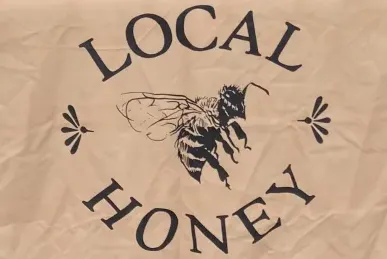
Old Town San Clemente Market
Local. Handmade. Heartfelt. Join us for a community-driven farmer's market in the heart of San Clemente.
